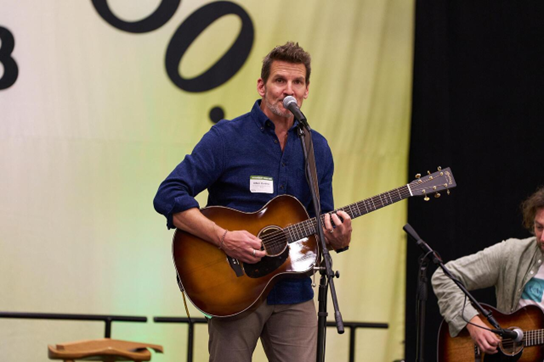Martin Releases Jason Isbell Signature Models and New Strings
All-New Martin 0-17, 0-10E Jason Isbell now available
All-New Era PB Strings Also Released
“The Martin 0-17 Jason Isbell is a limited-edition model crafted to replicate the pre-war 0-17 at the heart of his latest album. Limited to just 50 instruments, it’s built entirely from solid sinker mahogany paired with Adirondack spruce Golden Era scalloped X-bracing for a warm, expressive voice. The sinker mahogany neck, inspired by Jason’s pre-war 0-17, combines with a Brazilian rosewood fingerboard and bridge for classic feel and playability. 17-style appointments and a vintage gloss finish complete its timeless look.
“This one replicates the 1940 0-17 that I used on Foxes in the Snow,” said Jason. “The Brazilian [rosewood] for the bridge and the fingerboard is a really special thing. The fact that Martin was able and willing to do that for these guitars makes me really, really happy… and the neck on this one is pretty identical in shape to the original guitar. It’s a very simple guitar to look at and to play, but certainly not simple to put together.”
The Martin 0-10E Retro Jason Isbell brings that spirit to the Road Series in a stage-ready form. Featuring a satin-finished all-mahogany 0 14-fret body, scalloped spruce X-bracing, and Martin E1 electronics with a built-in tuner, it delivers warm, focused tone and plug-and-play performance. With East Indian rosewood accents, 17-style inlays, and nickel open-gear tuners, the guitar balances vintage-inspired looks with modern versatility.
“This guitar meets the artist’s criteria that the instrument can’t be the challenge,” Jason said. “They’re well made, they’re easy to play, they sound good, and they don’t scream, ‘Look at me.’ At this price point, a whole lot of people are gonna have access to it—and that’s great because it encourages beginner guitar players and singer-songwriters to have something that is quality. I could take this guitar and just make a living with it.”

In addition to the new guitars, Martin is launching an all-new line of strings: Martin Era™ Strings. Designed to set the standard for acoustic tone and playability, they combine the best of Martin’s string-making innovations into one premium offering. Era strings feature a patented Lifespan® treatment to protect against corrosion, Flexible Core construction to enhance comfort and fretability, and silk-wrapped ball ends to help protect your prized instrument. Together, these features establish a new benchmark for what phosphor bronze acoustic guitar strings can deliver.
Within the Era line is Jason’s first-ever signature set: Martin Era™ Jason Isbell Signature Strings. Developed with a traditional SP® core to match his distinctive sound, this Artist Light set is custom-voiced for strength, balance, and consistency. Finished with distinctive red silk-wrapped ball ends, they reflect his exact touring and studio-tested preferences, giving players direct access to the same feel and performance that inspire his music.
“I’ve used Martin phosphor bronze strings for a long time—12-54 on almost all of my acoustics,” said Jason. “I know how they’re going to react, how many shows I can get out of them, and they don’t take long to break in. You stretch them right when you put them on, they won’t go out of tune. This is a really big honor for me.”
Durability and reliability were essential to the design. “I don’t have to worry about being fragile, being gentle with the strings,” he added. “They sound good for a long time, I don’t have to change every show, which my tech loves, and I love also.”
0-17 Jason Isbell Photo Gallery HERE
0-17 Jason Isbell Spec Sheet HERE




